In the United States, the sport of basketball for women has a history stretching back to the late 1800s and developed significantly in the early 1900s. The game had a distinct beginning and evolved with unique characteristics driven by the ideas and concerns of that era.
Women’s basketball first began in the winter of 1892. This took place at Smith College, a women’s college in Massachusetts. It was here that the sport was adapted for female students, marking its origin point.
A key figure in the beginning was Senda Berenson. She was an instructor at Smith College. Senda Berenson took the game of basketball, which had been invented for men just a year earlier, and taught it to her female students. Her main reason for doing this was practical: she hoped that playing the game would improve the physical health of the young women.
The game quickly spread beyond Smith College. Its early followers and participants were associated with YMCAs, which were not just for men but also had programs for women, and with colleges across the United States. These institutions became the first places where women’s basketball teams were formed and where the game was played regularly. The sport rapidly gained popularity in these educational and community settings throughout the country.
Read more
However, teaching basketball to women was seen by some as potentially risky in the late 1800s and early 1900s. Senda Berenson herself had concerns. She worried that the game might be too strenuous or physically demanding for women. A specific concern at the time was that too much intense activity could cause women to suffer from something called “nervous fatigue.”
Because of these concerns and the societal views about what was considered appropriate physical activity for women, Senda Berenson introduced modified rules for the game. These rule changes were specifically designed to make the game less physically challenging and therefore more “acceptable” for women to play in that era’s society. The rules used for women’s basketball were different from the rules followed by men’s teams playing basketball at the same time. Berenson specifically taught her students these adapted rules.
These modified rules changed how the game was played compared to today’s basketball. While the exact rules varied, the core idea was to limit continuous running or dribbling. This often meant dividing the court into sections, with players confined to a specific area, emphasizing passing and shooting over fast breaks and individual drives. The aim was to reduce the level of strenuous physical contact and endurance required.
The equipment used in early women’s basketball was also quite basic, as specified in the context. Peach baskets were used as the hoops that the players shot the ball into. These baskets were attached to walls or poles and did not have backboards initially. The ball used for the game was a soccer ball, not the specialized basketballs used today. This simple equipment was standard for the sport in its earliest days.
The uniforms worn by American women’s basketball teams in the early 1900s reflected the clothing styles and social norms of the period. According to the context, the uniforms were similar to school uniforms of the time. A key part of this attire was long, baggy shorts. The overall look was designed for modesty and differed significantly from the jerseys and shorter gym shorts worn by women’s basketball players today.
Variations of Senda Berenson’s modified rules continued to spread across the country. As more YMCAs and colleges started women’s basketball programs, they adopted and sometimes adapted these rules designed specifically for women. This meant that women’s basketball in the early 1900s was played with a variety of rule sets, all based on the idea of modifying the men’s game for what was considered appropriate for women’s health and social standards at the time.
Early women’s basketball teams in the early 1900s would consist of players at colleges and YMCAs. These teams practiced and competed using the modified rules, aiming for physical health and friendly competition. They would play in simple gyms, using peach baskets and soccer balls, dressed in their long shorts and school-like uniforms.


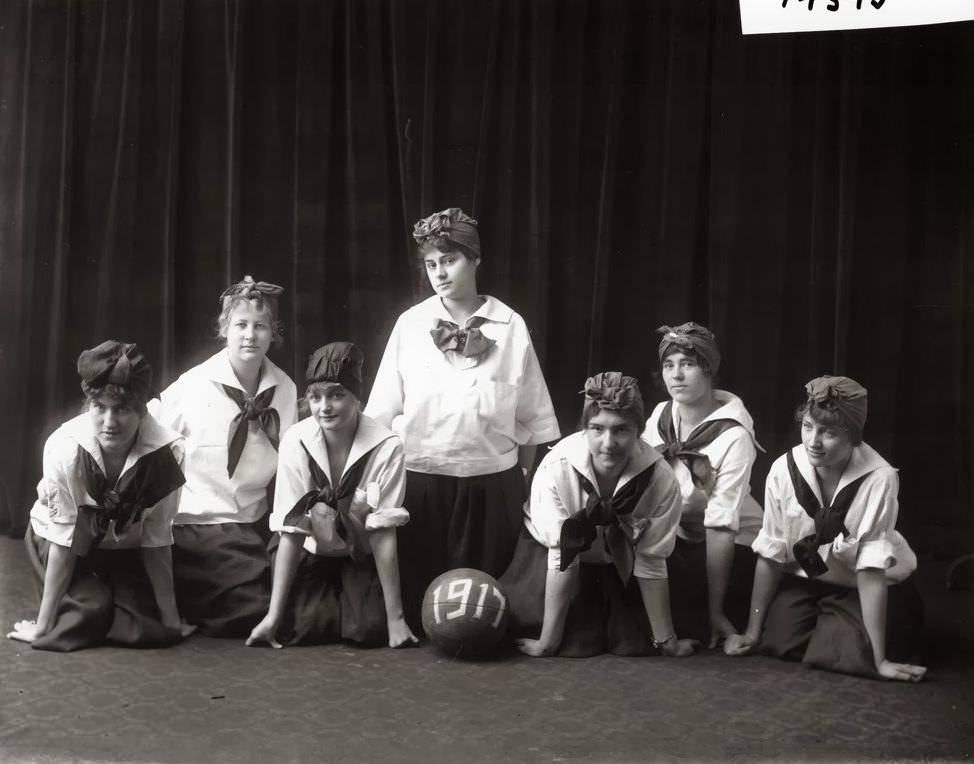
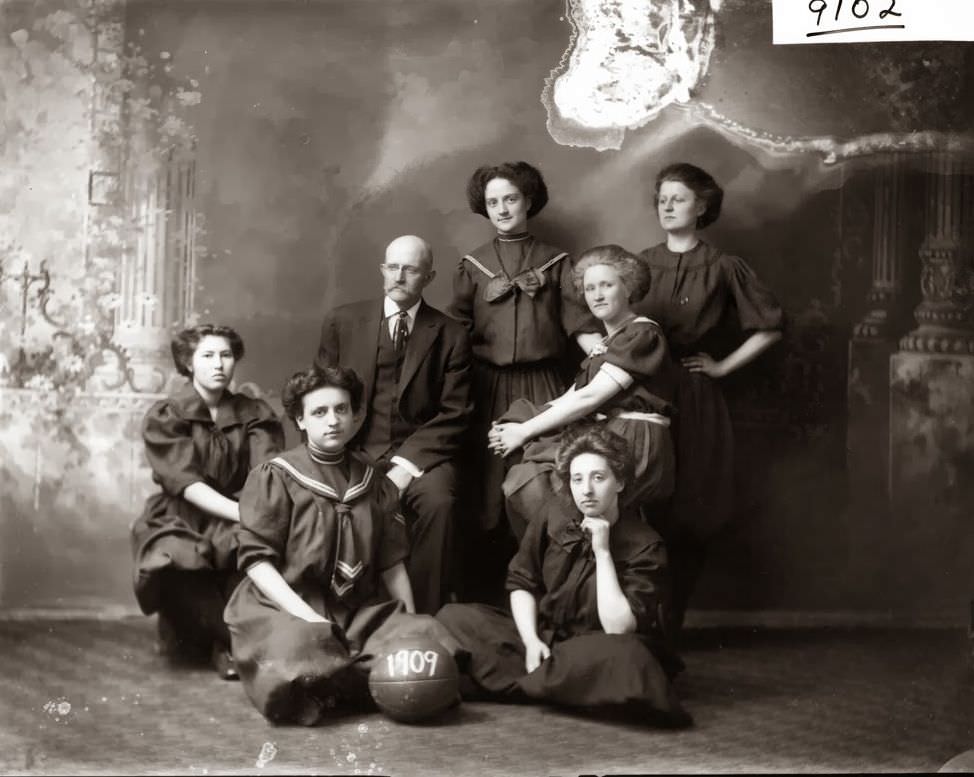

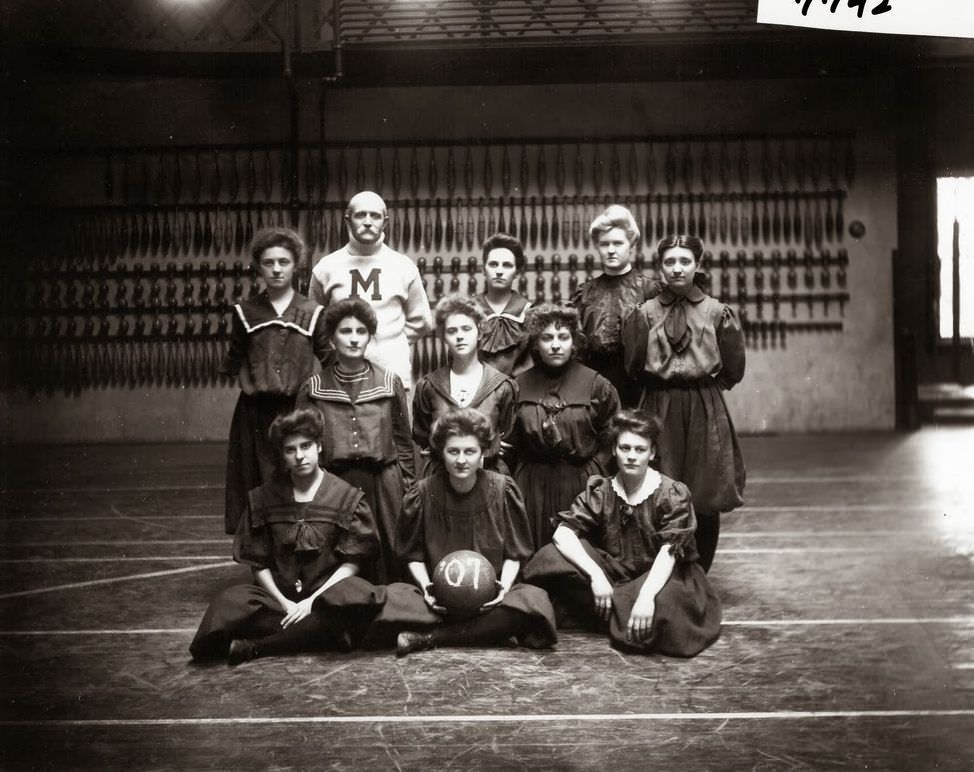
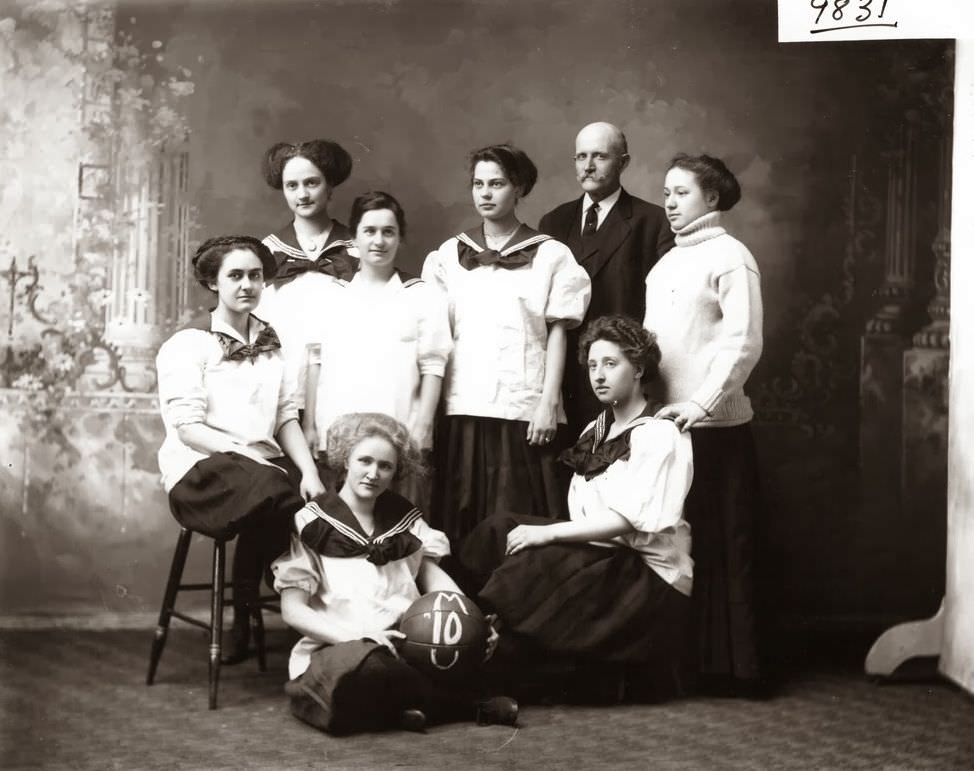
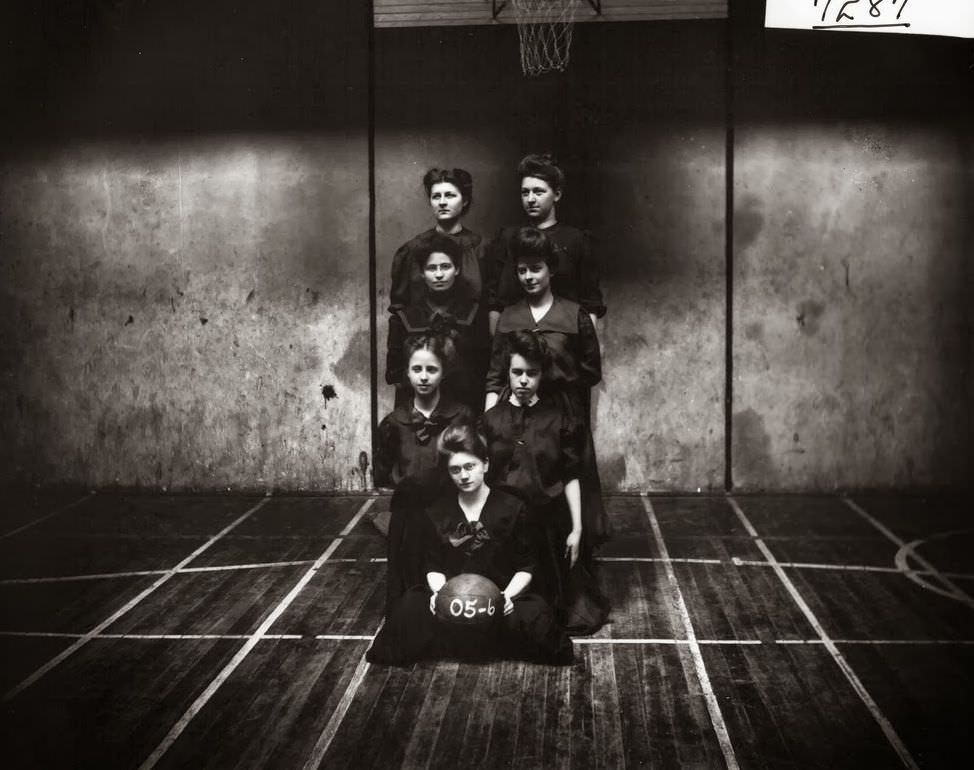
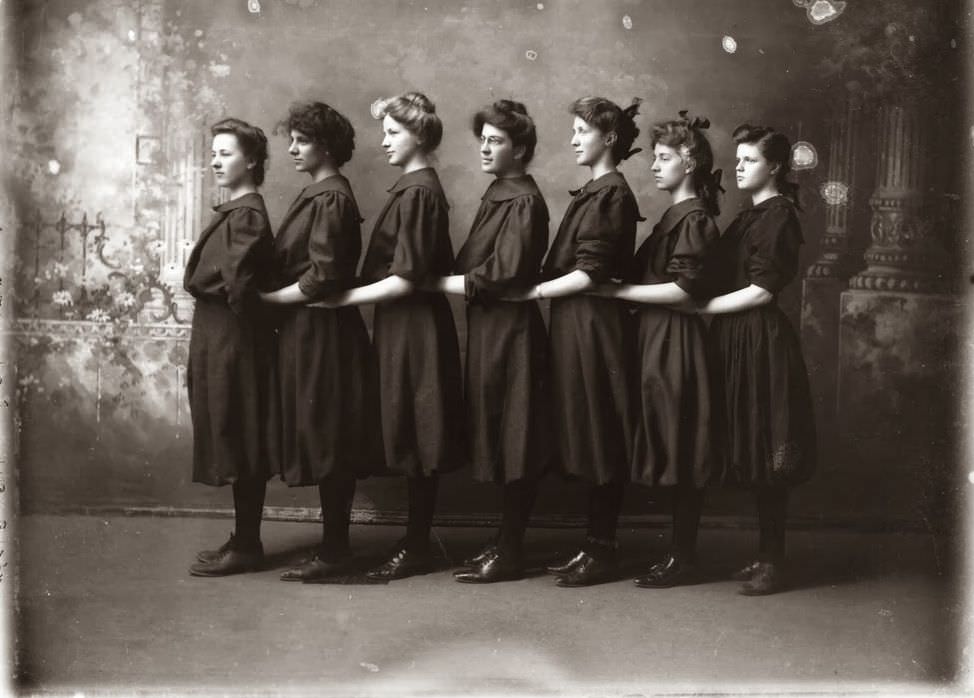
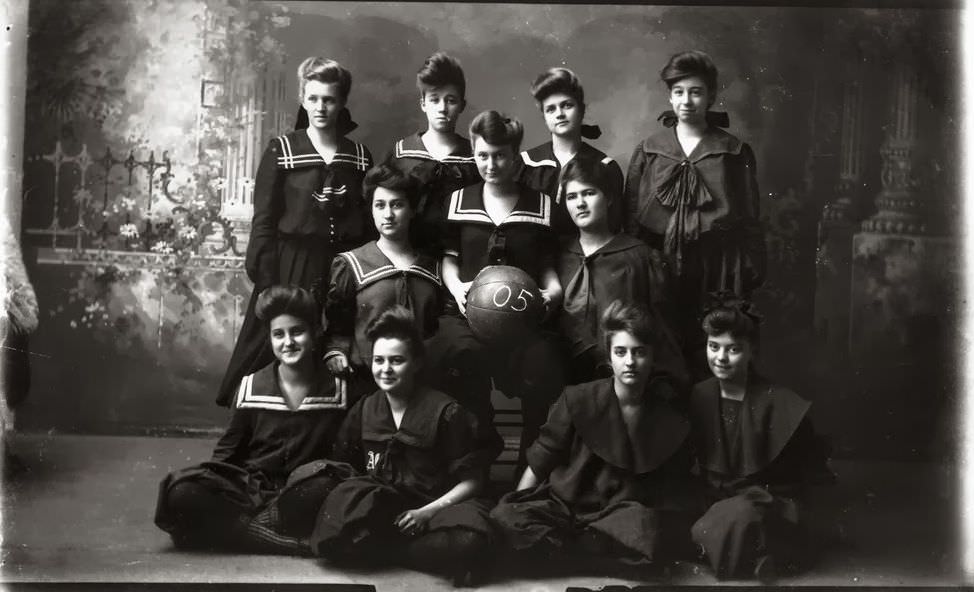
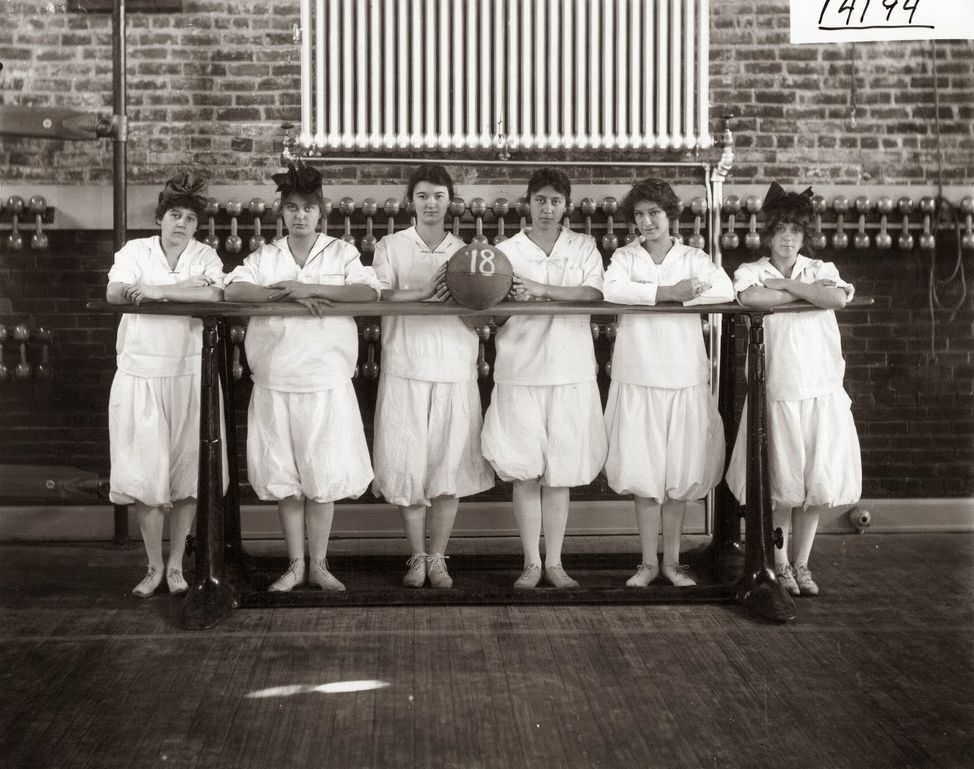
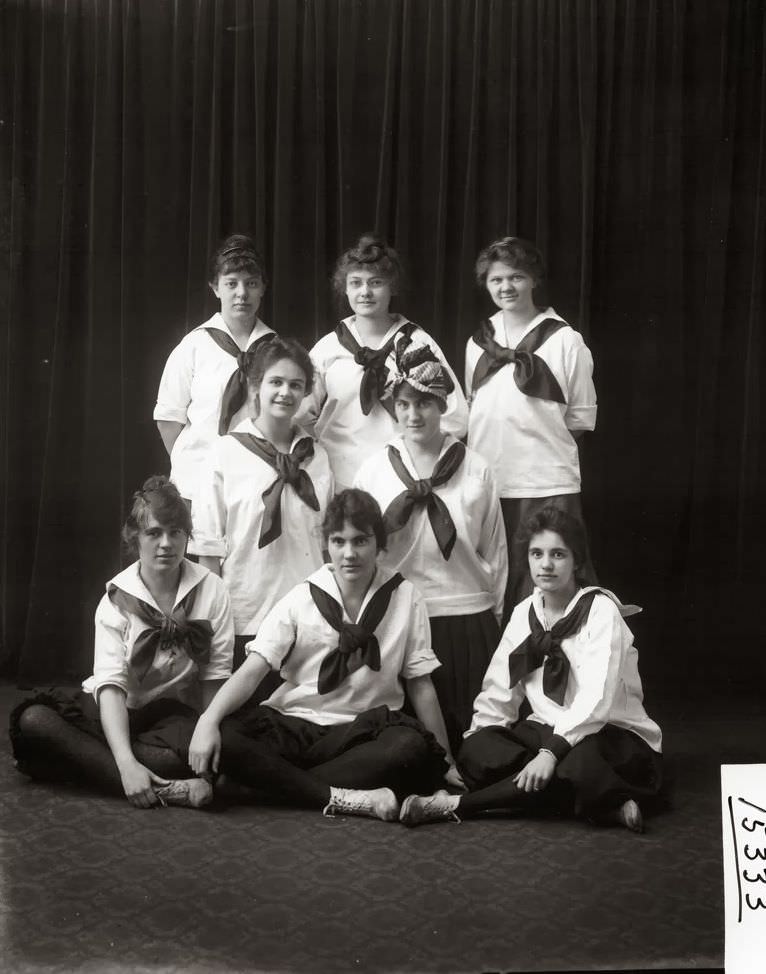
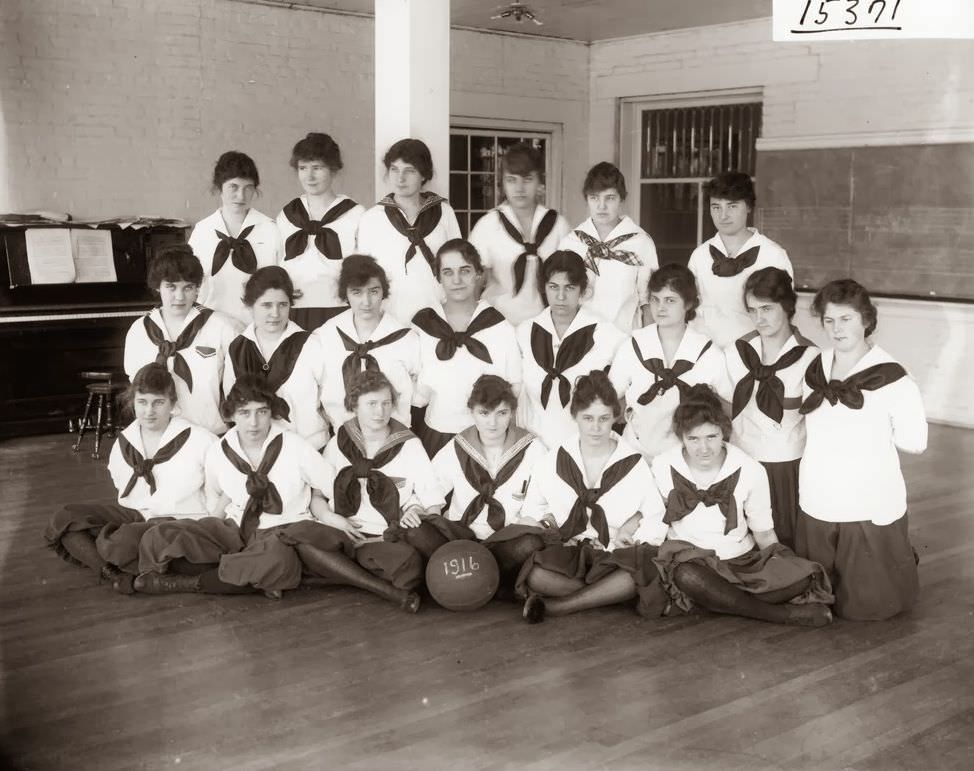
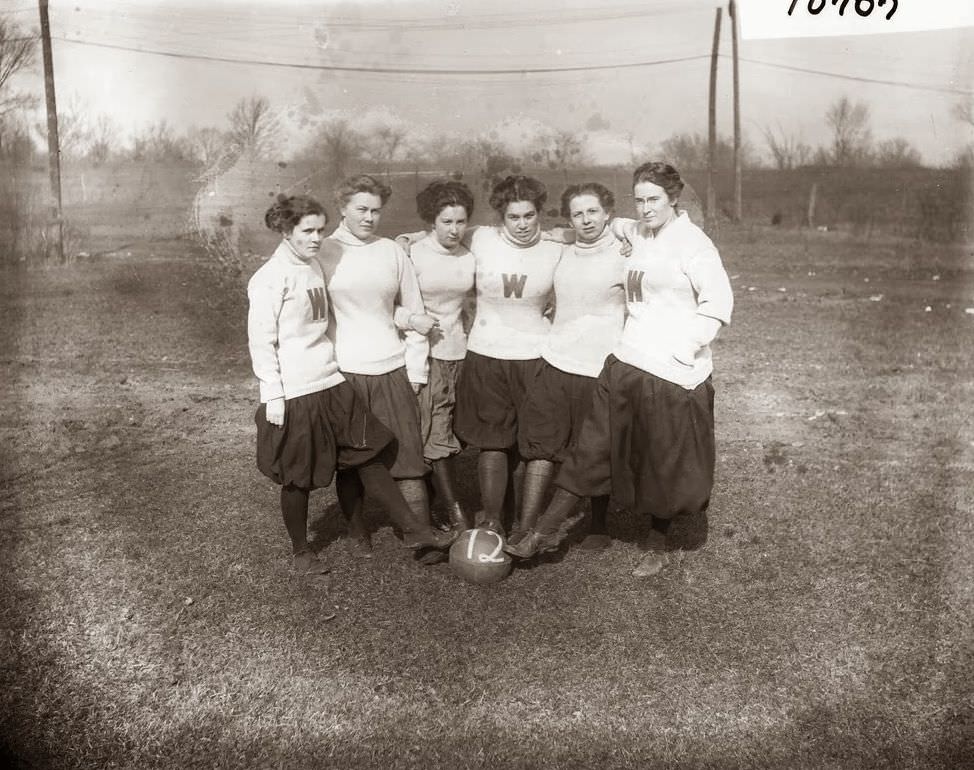
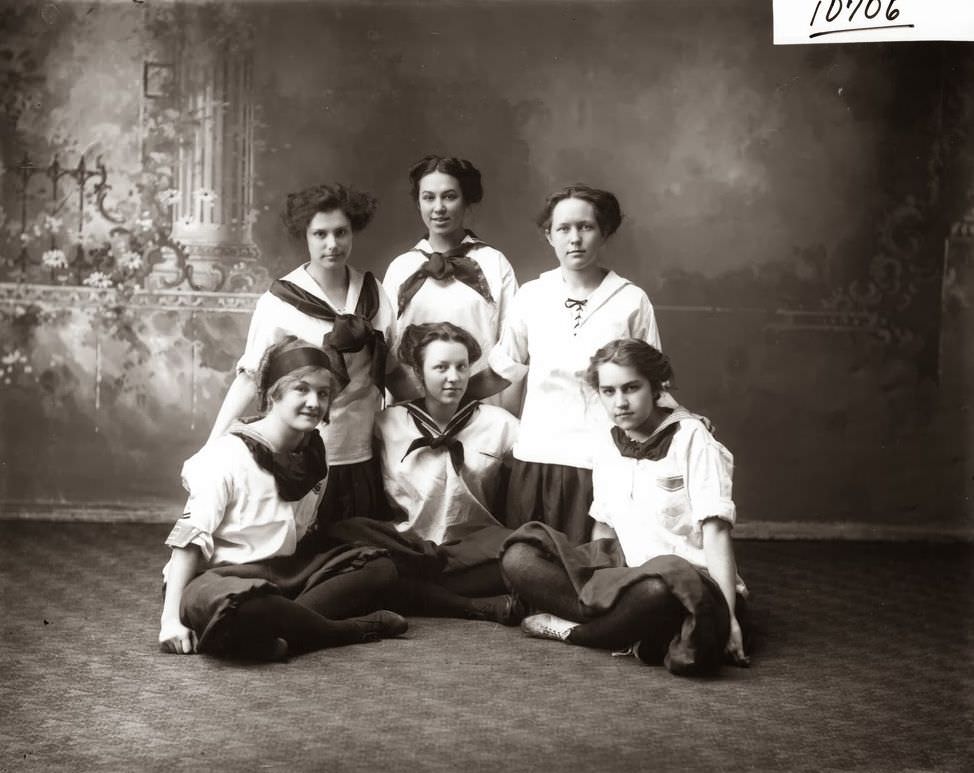
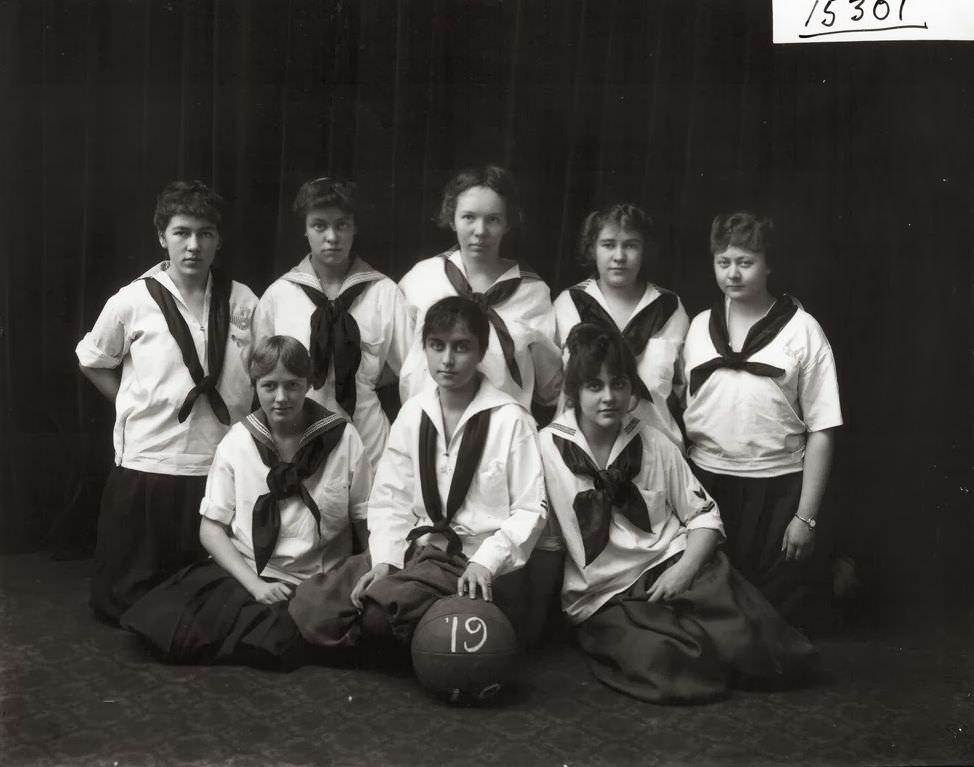
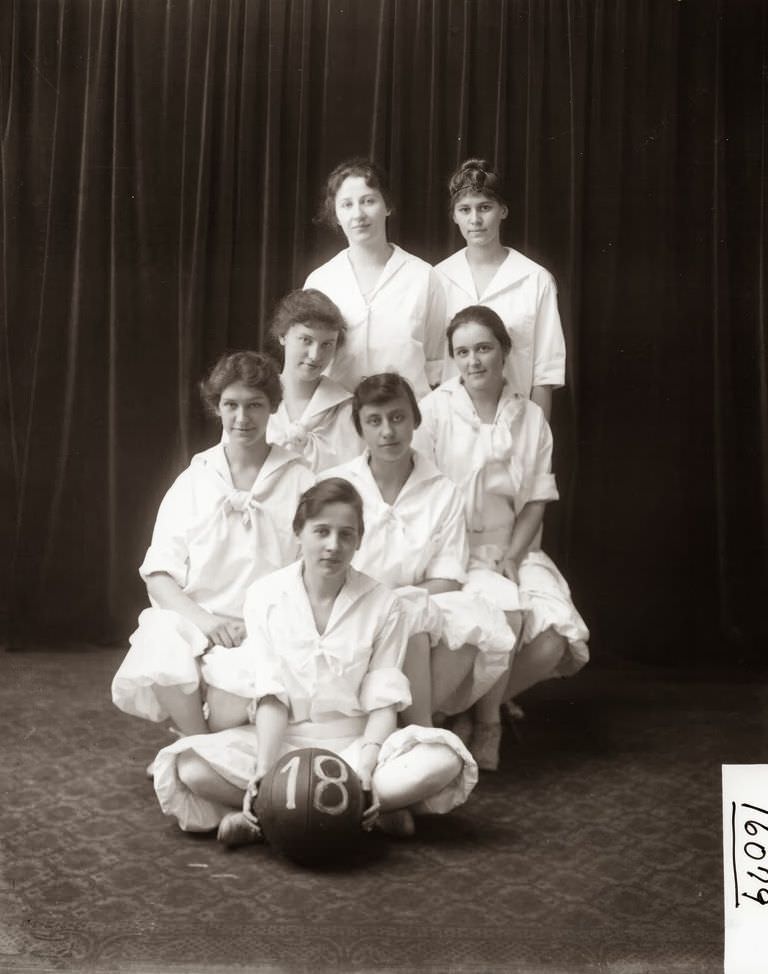
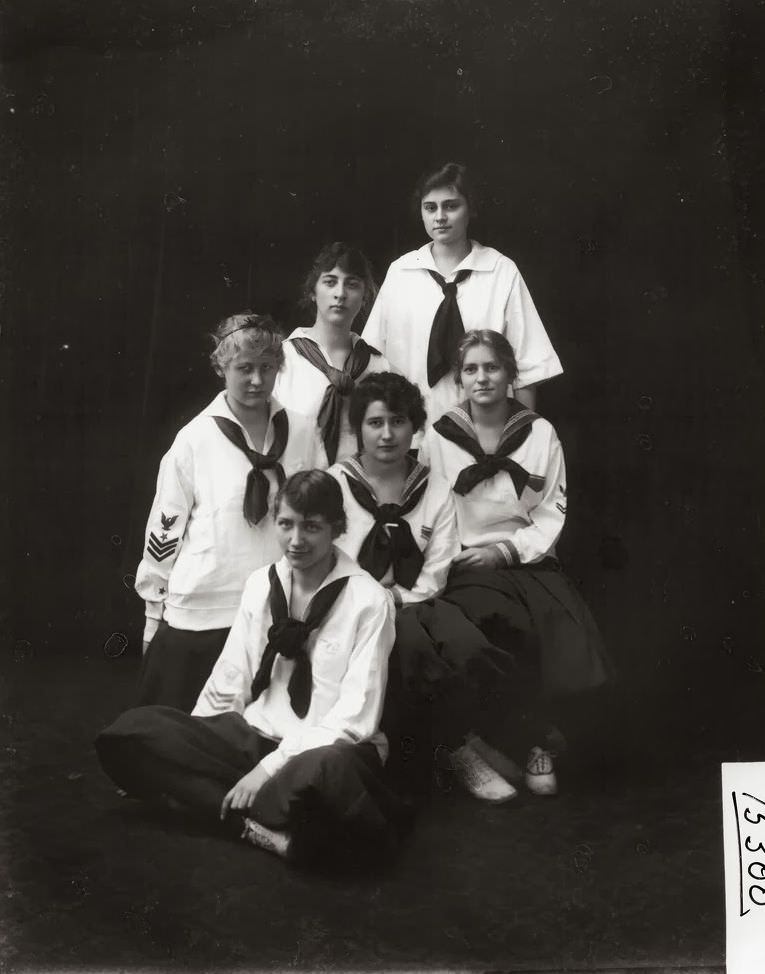
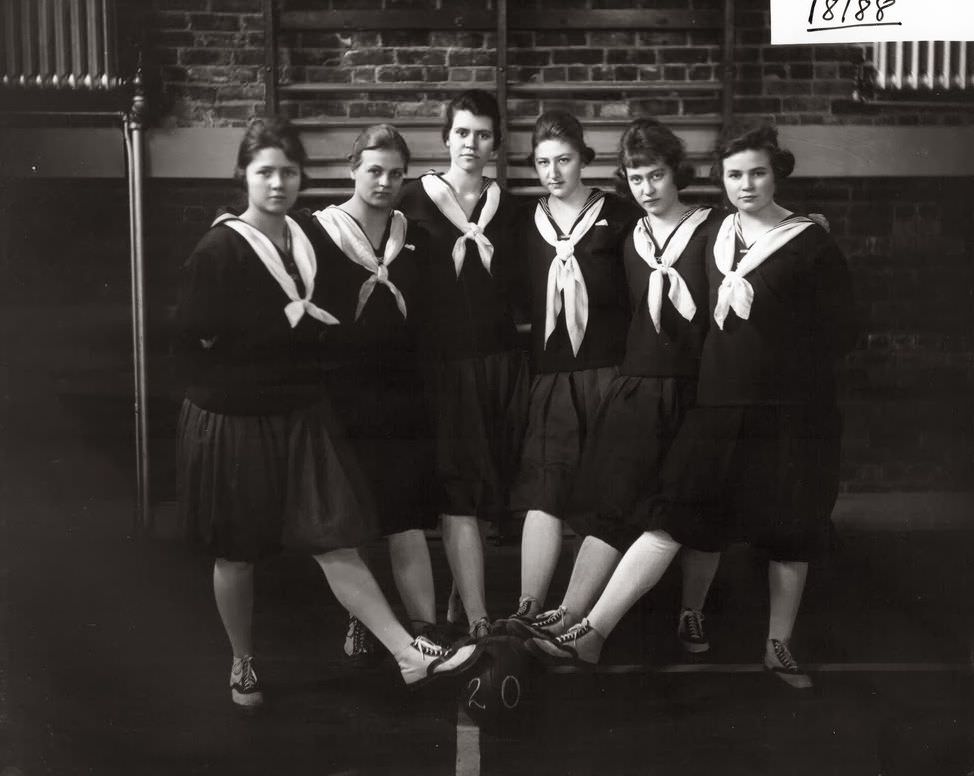
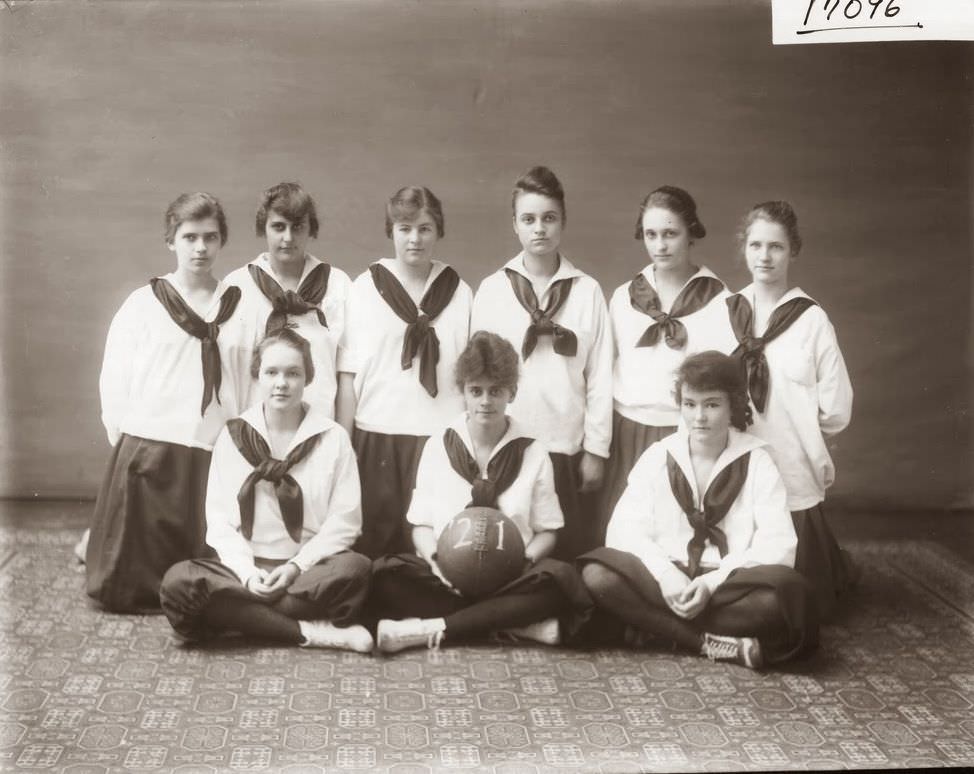
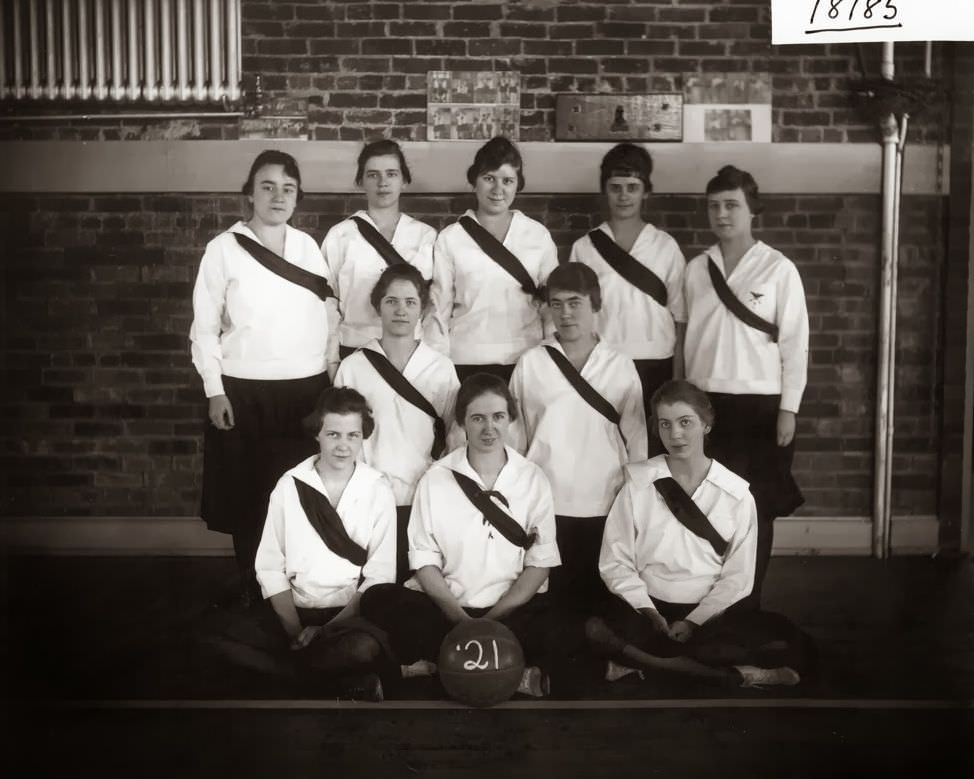
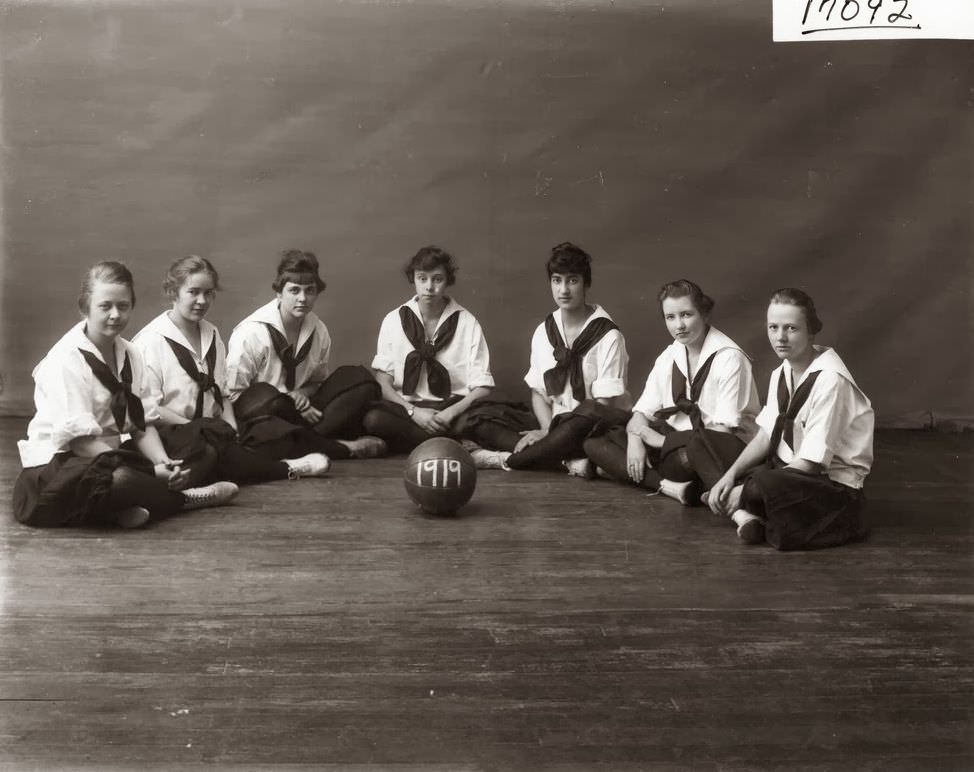
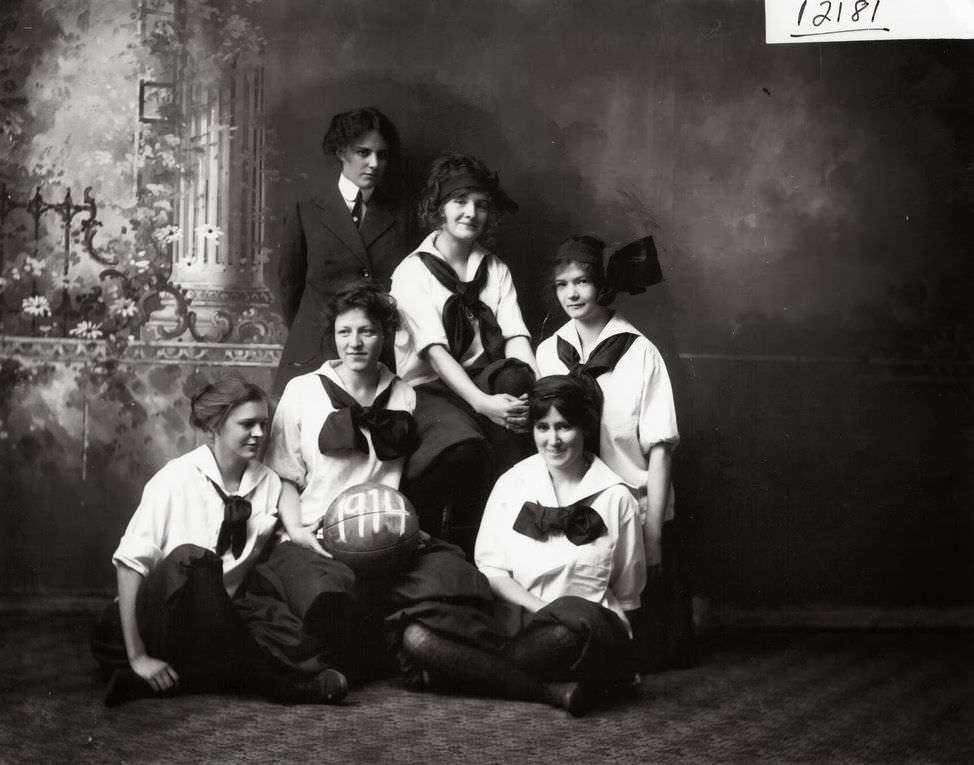
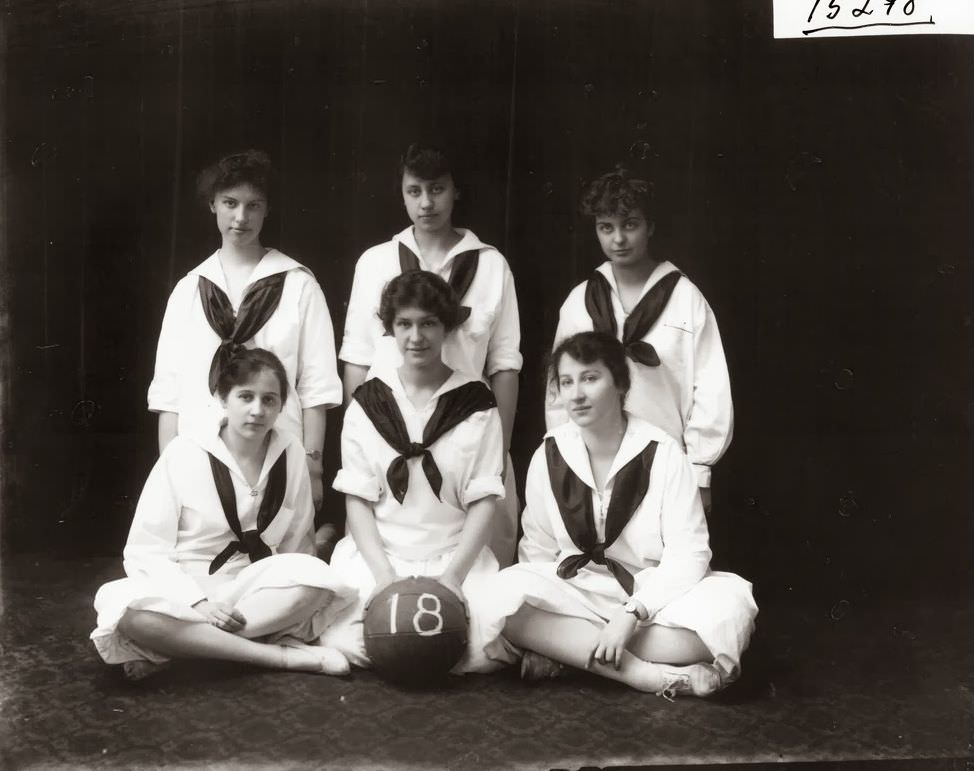
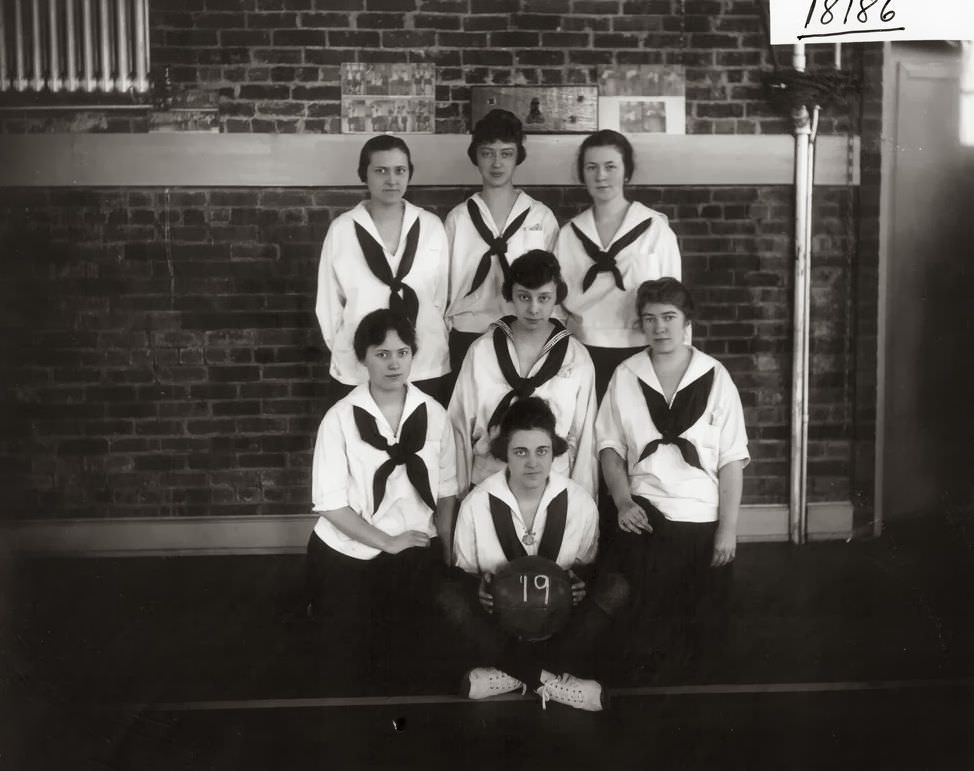
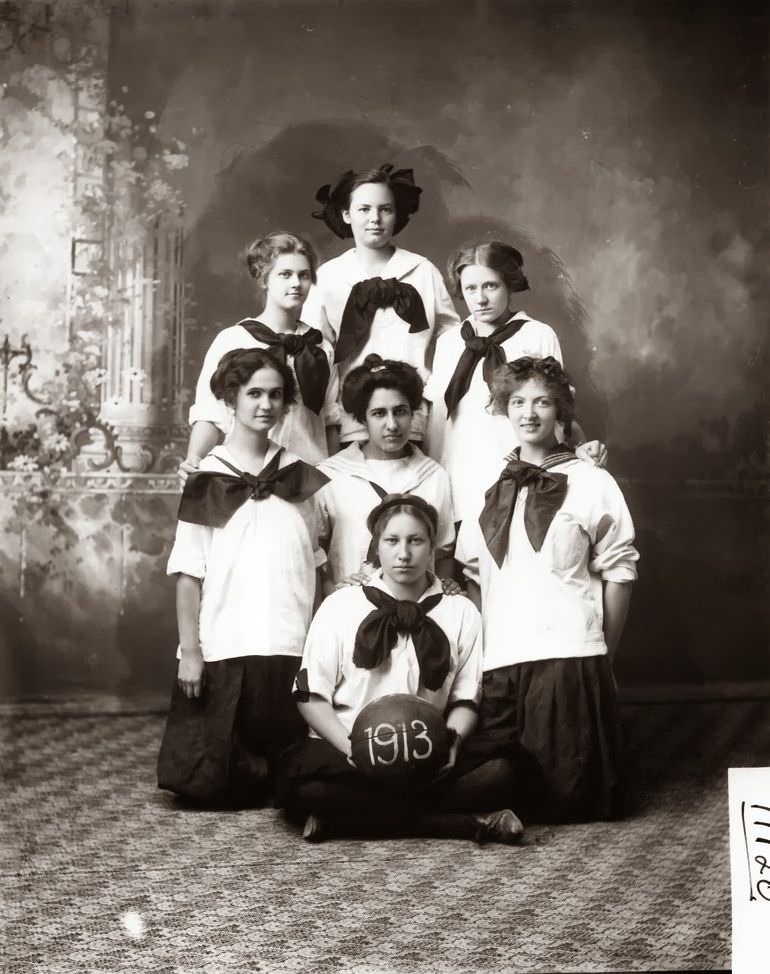
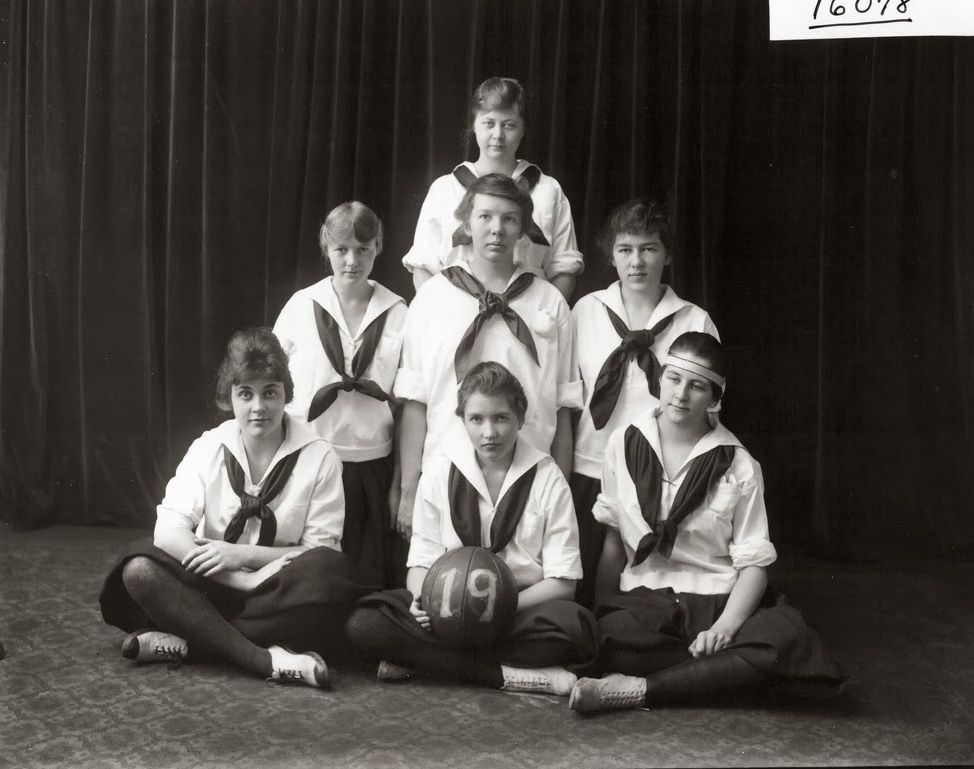
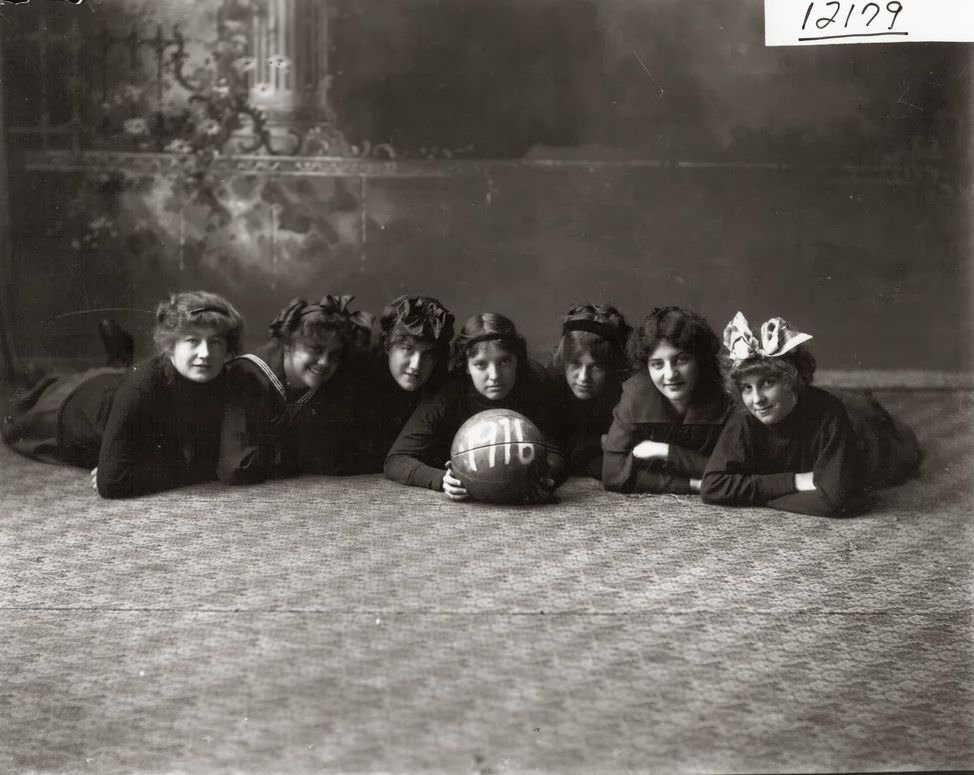
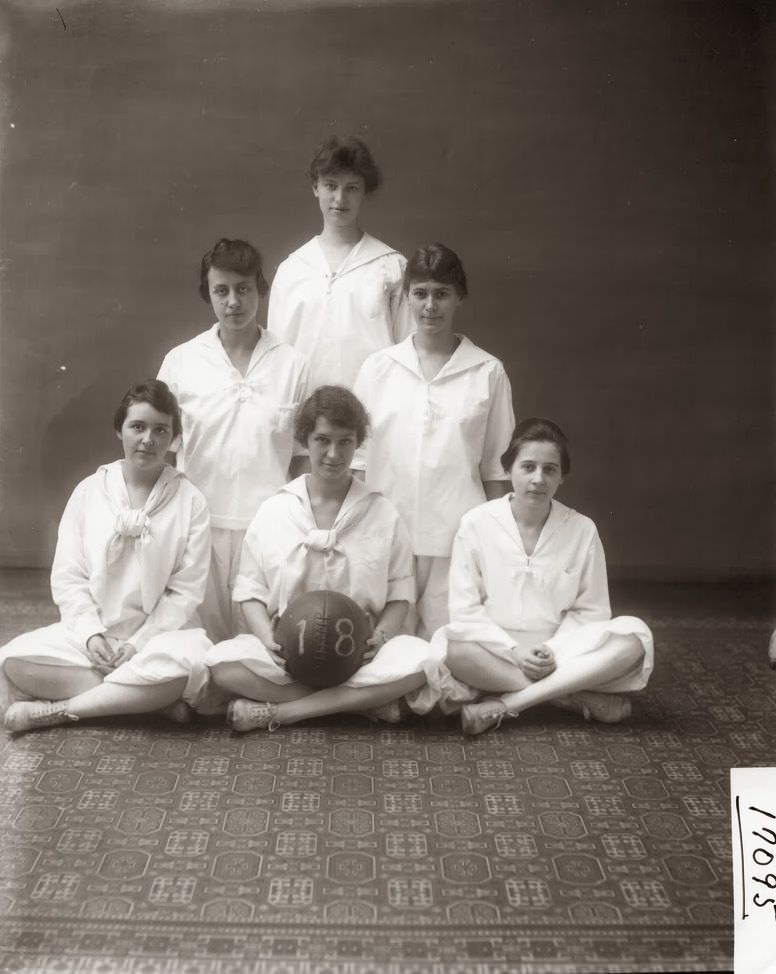
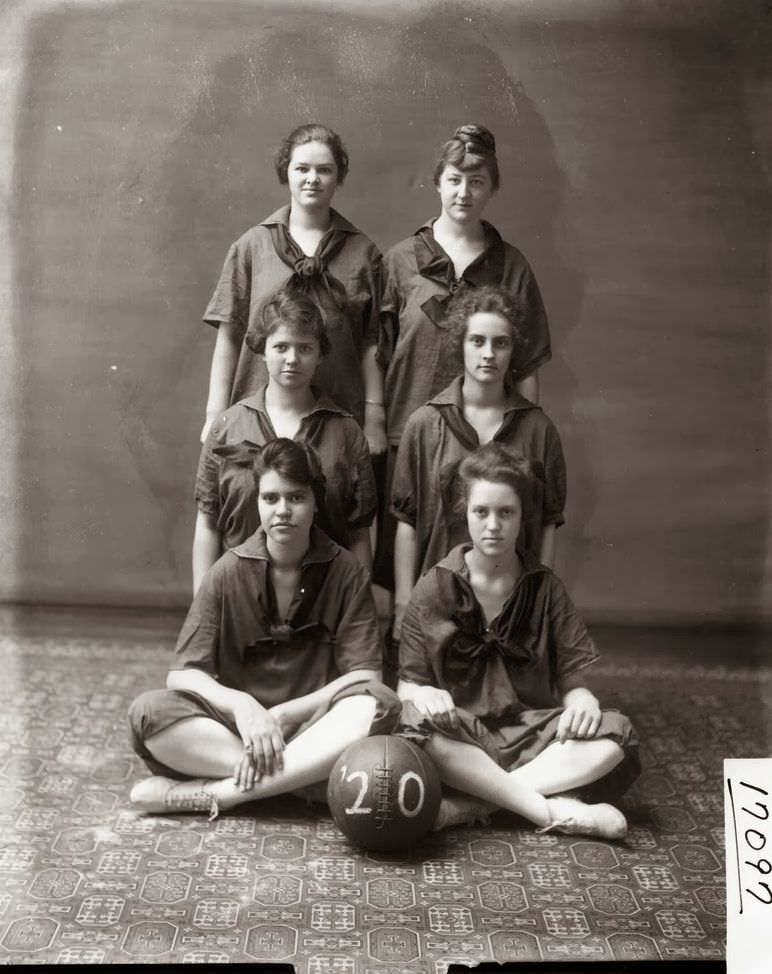
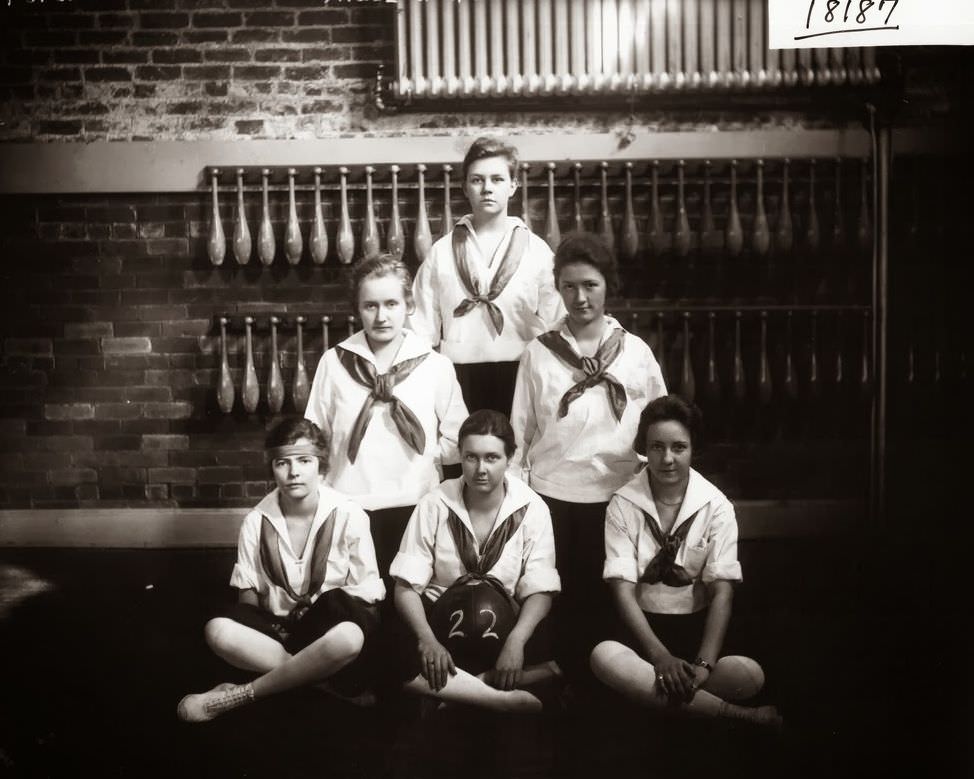
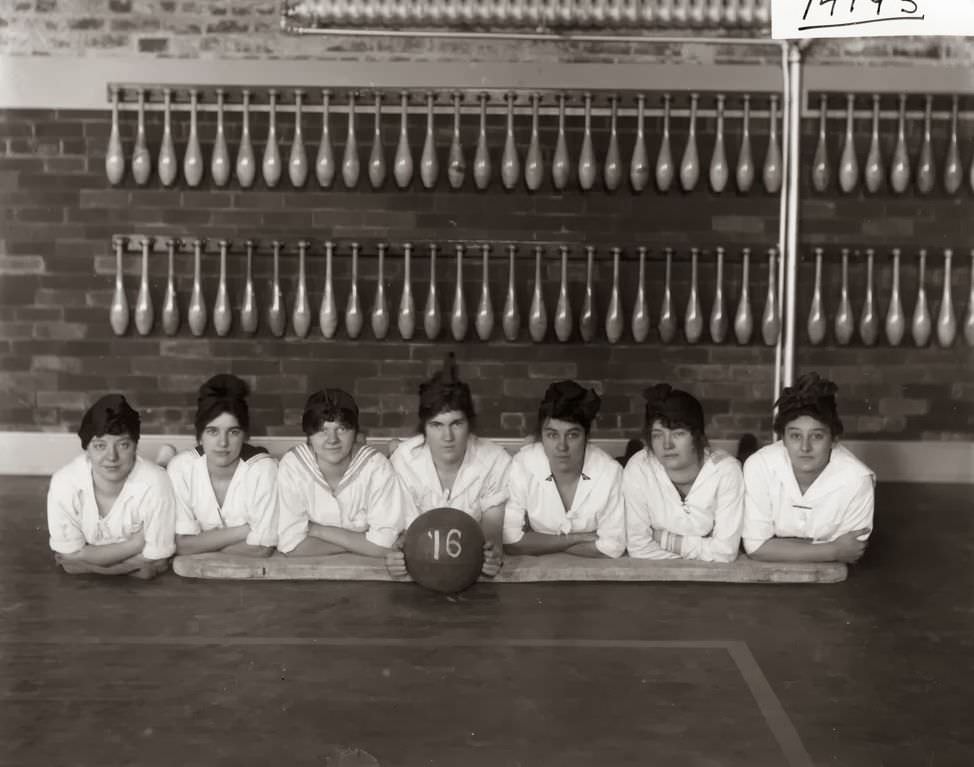
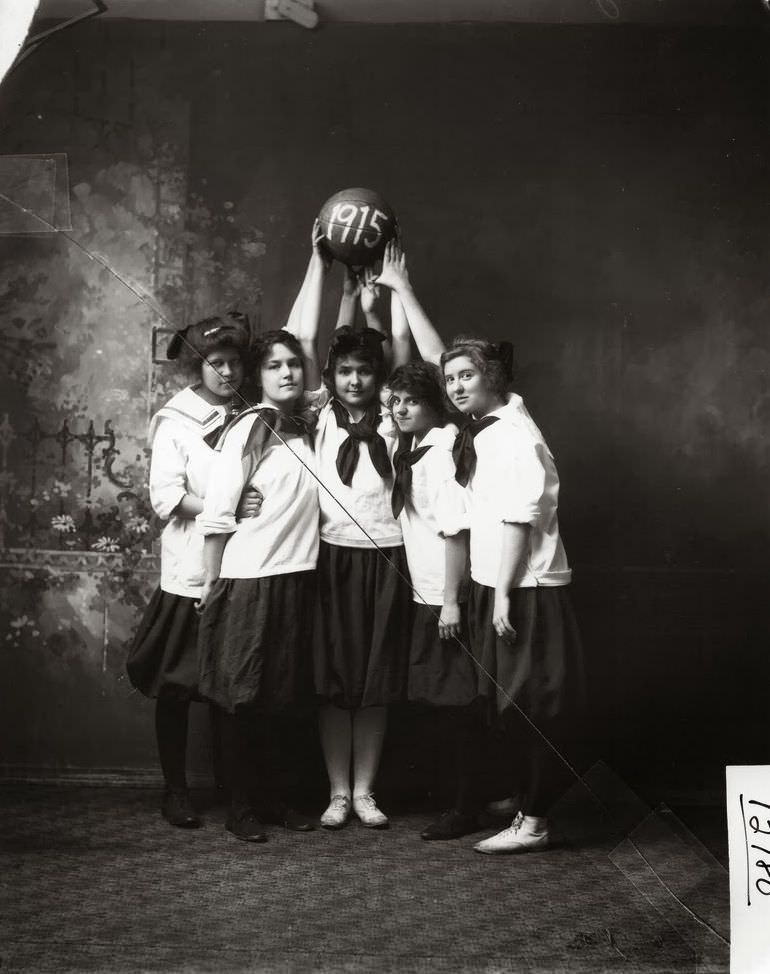
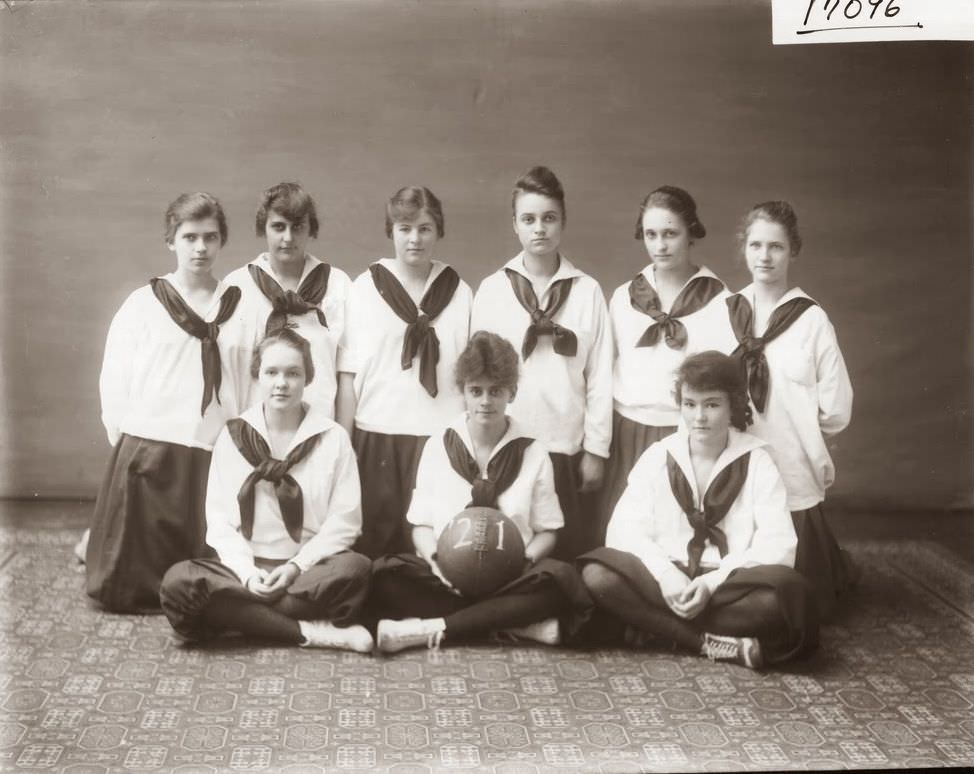

A lot of these pictures are labelled with the incorrect dates, based on the dates on the basketballs . . .